
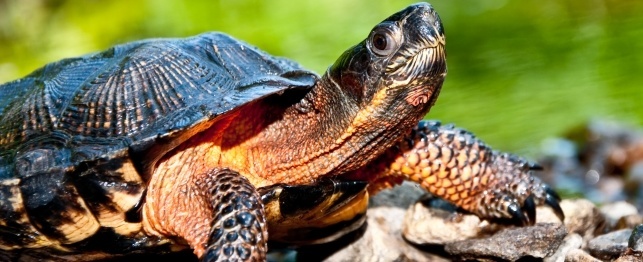
Reptiles
The terrestrial wood turtle, Clemmys insculpta, has long been regarded as one of the most intelligent of the turtles. Found primarily in the northeastern United States and southeastern Canada, the wood turtle is a creature of both water and land, frequenting bogs, marshes, ponds, streams and woodlands.
This turtle does well in captivity and seems to recognize and respond to the owner. Due to habitat destruction and their popularity as pets, the wood turtle is now protected from commercialization and cannot legally be taken from the wild. Some captive-born babies are occasionally available in the pet trade. It is a charming and long-lived pet, with a lifespan of easily 25 years in captivity.
The most noticeable thing about the wood turtle is the sculpted dark brown carapace, upper shell, measuring up to 10 inches in length. Each scute (an external bony plate) is pyramid-shaped with distinct, irregular, concentric growth rings. The scutes around the rear of the shell flare upwards and are serrated. Underneath the turtle, the plastron or lower shell, is yellow with a dark brown blotch on the outside, rear corner of each scute. On the underside, the scutes around the edge of the plastron, and the scutes that connect the upper and lower shells usually have a dark blotches along their outside edges.
The head and legs are dark brown. The neck and exposed body are bright orange, or in the case of those from the Michigan area, are yellow green.
Wood turtles are most active in early morning and late afternoon and may walk about wooded areas or sun on a snag above moving water during the warmest part of the day. They are usually associated with water, although they may not spend the majority of their time there. These are active turtles with the need to roam, and they move quickly (for a turtle). They establish home ranges in the wild, and most of these ranges follow water courses such as streams, creeks or ponds. Their learning behavior has been studied and it has been found that their food-finding ability rivals that of a rat. This ability may be utilized as sort of a homing instinct. In one study, when Michigan wood turtles were displaced to an unfamiliar site up to 5 miles away, the turtles returned home. The journey took less than 2 months. No one knows for certain, but orientation is probably a combination of scent cues and honing in on magnetic waves.
In the wild, wood turtles are temperature tolerant, remaining active even when water temperatures cool to 42 degrees Fahrenheit, but they do not feed unless the water temperatures warm to the high 50s. Wood turtles feed and move around in the early morning and late afternoon. Late mornings and late afternoons are spent basking. At night, they enter shallow burrows they have scooped out under grass hummocks, leaf piles or under brush. Some enter water to sleep.
Wood turtles can be kept with each other or with other turtles in captivity, but they should all be about the same size to avoid territorial disputes. Males of all sizes tend to interact with each other more than do females with other females, or males and females.
Wood turtles need caging that offers land and water areas, and these active rangers need as much room as you can give them. During warmer weather, if you have access to a garden or a shaded balcony, you can put them outdoors. One suggestion is a 2-foot by 6-foot galvanized cattle trough, with a drainage hole drilled at one end and the other end elevated about 4 inches. Moistened sphagnum moss to a depth of 1 inch in the shallow end, and 4 inches in the deeper end works well.
Nestle a water bowl in the deeper end, deep enough to allow for a little paddling. The feeding dish and a flat basking rock should be at the shallow end. This provides enough room for a pair of year-old babies.
Indoors, a 30-gallon tank with a land area and a filtered water area will provide enough space for a pair of hatchlings. Add a hide box on the land area, or loose soil or mulch damp enough for a shallow burrow for sleeping. Add a hot spot light over the land area next to the water, so your wood turtles can bask and elevate their body temperatures yet can drop into water if they feel that danger threatens (or to cool off). Daytime temperatures from 70 to 85 degrees F with a ground temperature of 95 degrees F under the hotspot will be fine. Evening temperatures can drop into the 50s with no problems.
Wood turtles are omnivores, and have been observed eating the green leaves of strawberries, and the fruit of strawberries, blueberries and blackberries. They also eat earthworms, fungi, slugs, and vegetation such as violets, cinquefoil, moss, willow and alder leaves, flowers and fruit pieces. They consume meat in the form of tadpoles, baby mice, snails and a variety of insects.
Captive wood turtles eat mealworms and crickets. When feeding the mealworms to your wood turtles, drop a few into the cage in front of your turtles. The turtles will enjoy hunting down the mealworms, and will seem to enjoy digging through the moss or mulch to find them. A half-dozen or so crickets can be tipped into the cage every other day. Once a week, dust the crickets or mealworms with a vitamin/calcium supplement made for reptiles. Place the feeder insects in a small jar with a pinch or two of the supplements; cover the jar and shake it to coat the insects with the powder. (These coated insects are known as "shake and bake" feeders). A diet low in calcium can result in a softened shell and other bone problems, the turtle equivalent of rickets.
There are commercially prepared canned diets for box turtles or other land turtles that wood turtles may enjoy.
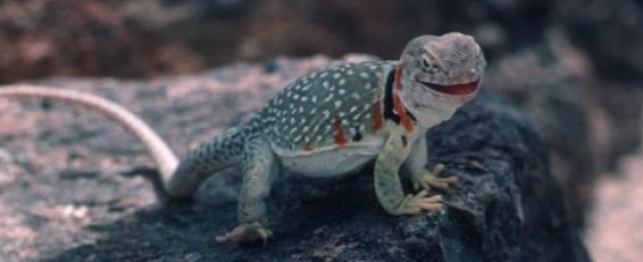 Choosing an Eastern Collared Lizard
Choosing an Eastern Collared Lizard
Choosing an Eastern Collared Lizard
Choosing an Eastern Collared Lizard
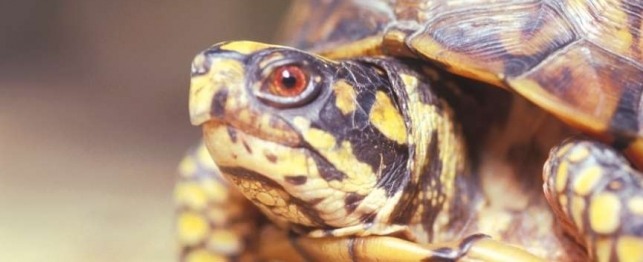 Choosing a Box Turtle
Choosing a Box Turtle
Choosing a Box Turtle
Choosing a Box Turtle
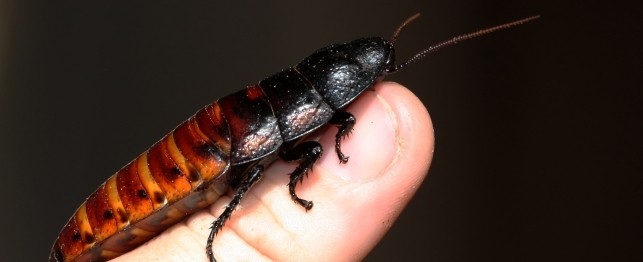 Unusual Pets - The Hissing Cockroach
Unusual Pets - The Hissing Cockroach
Unusual Pets - The Hissing Cockroach
Unusual Pets - The Hissing Cockroach
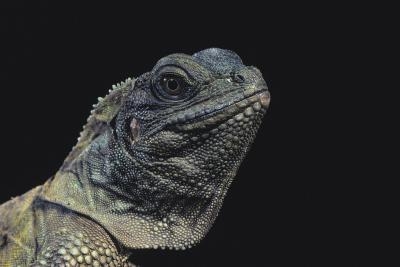 DIY Water Dragon Enclosures
DIY Water Dragon Enclosures
DIY Water
DIY Water Dragon Enclosures
DIY Water Dragon Enclosures
DIY Water
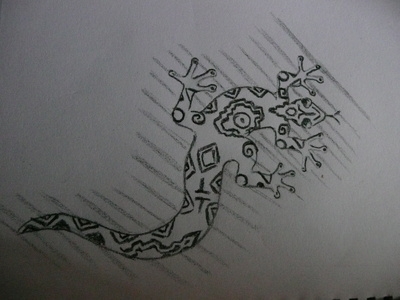 List of Reptiles for Children
List of Reptiles for Children
List of
List of Reptiles for Children
List of Reptiles for Children
List of
Copyright © 2005-2016 Pet Information All Rights Reserved
Contact us: www162date@outlook.com